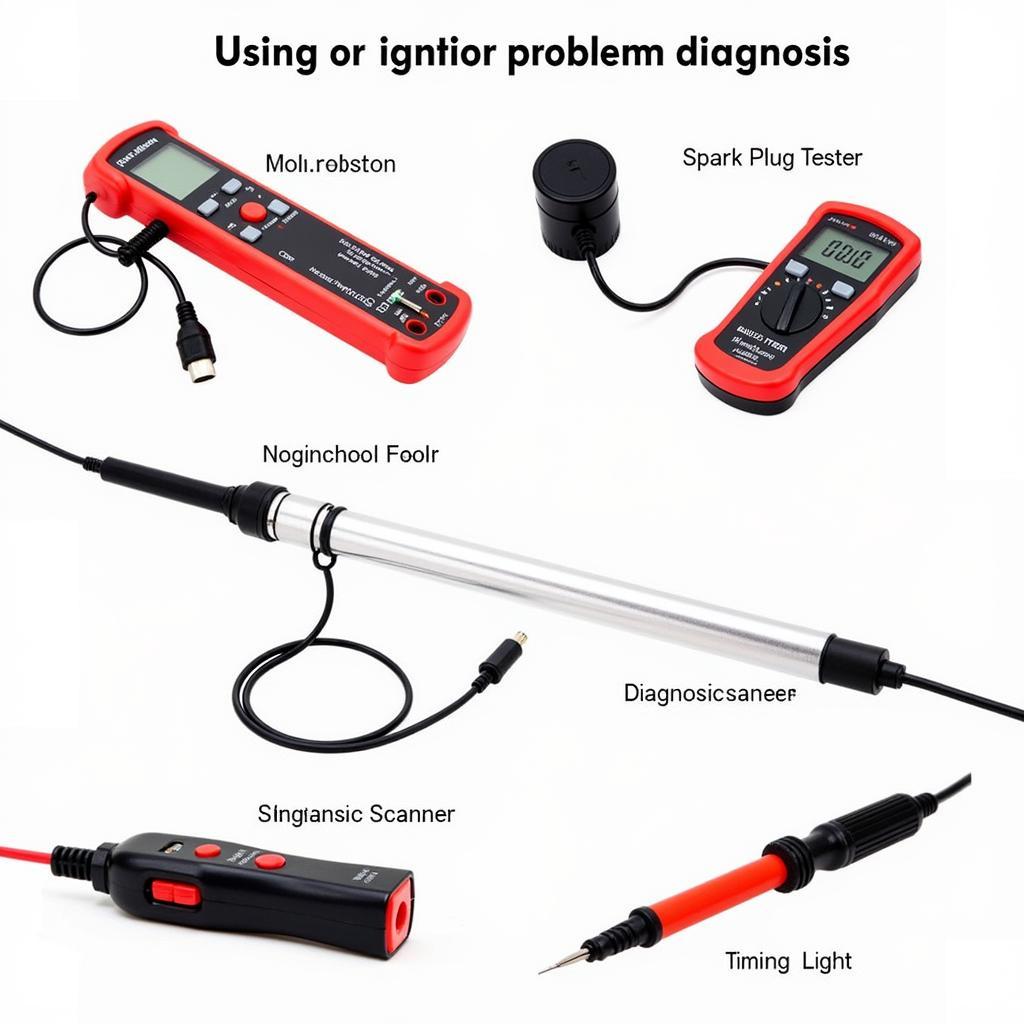Car Ignition Problem Diagnosis can be tricky. This guide provides a comprehensive approach to identifying and troubleshooting car ignition problems, empowering car owners, mechanics, and technicians alike to tackle this common automotive issue. From understanding the basics of the ignition system to employing advanced diagnostic techniques, this article will equip you with the knowledge to confidently address any ignition-related challenge.
Understanding the Car Ignition System
The ignition system is the heart of your car’s engine, responsible for igniting the air-fuel mixture within the cylinders. A malfunctioning ignition system can lead to a variety of issues, from poor fuel economy to a complete inability to start the vehicle. Understanding how the system works is the first step in accurate car ignition problem diagnosis. The system typically consists of the battery, ignition switch, ignition coil, distributor, and spark plugs. Each part plays a crucial role in the ignition process.
If your car is having problems accelerating, the ignition system could be the culprit. A weak spark or misfire can significantly impact acceleration performance.
Common Symptoms of Ignition Problems
Several tell-tale signs indicate potential issues with your car’s ignition system. These include:
- Difficulty Starting: The engine cranks but fails to start, or requires extended cranking.
- Misfiring: The engine produces a rough, uneven idle or hesitation during acceleration.
- Reduced Power: Noticeable loss of engine power and sluggish performance.
- Poor Fuel Economy: A decrease in miles per gallon.
- Engine Stalling: The engine suddenly shuts off while driving or idling.
- Check Engine Light: The illumination of the check engine light can signal various issues, including ignition problems.
 Diagnosing Car Ignition Problems with Tools
Diagnosing Car Ignition Problems with Tools
Car Ignition Problem Diagnosis: A Step-by-Step Guide
Diagnosing car ignition problems requires a systematic approach. Here’s a step-by-step guide to help you identify the root cause:
- Visual Inspection: Begin by visually inspecting the ignition components for any obvious damage, loose connections, or corrosion.
- Battery Check: Ensure the battery is fully charged and providing sufficient voltage.
- Ignition Switch Test: Check the functionality of the ignition switch by turning the key to different positions and observing the dashboard lights and other electrical systems.
- Ignition Coil Test: Use a multimeter to test the resistance of the ignition coil’s primary and secondary windings.
- Distributor Cap and Rotor Inspection: Check for cracks, carbon tracking, or wear on the distributor cap and rotor.
- Spark Plug Test: Inspect the spark plugs for fouling, wear, or damage. Use a spark plug tester to verify they are firing correctly.
Experiencing a car cranks but does not start problem can be frustrating. Our guide provides detailed troubleshooting steps for this common issue.
Advanced Diagnostic Techniques
For more complex issues, consider using advanced diagnostic tools:
- Diagnostic Scanner: A diagnostic scanner can retrieve error codes from the car’s computer, providing valuable clues about the problem.
- Oscilloscope: An oscilloscope can analyze the ignition system’s waveforms, revealing subtle issues not detectable with other methods.
“A thorough understanding of the ignition system and systematic troubleshooting are essential for effective car ignition problem diagnosis.” – John Smith, Automotive Electrical Engineer
Conclusion
Car ignition problem diagnosis can seem daunting, but by following this guide, you can successfully pinpoint the source of the issue and take appropriate action. Remember, accurate diagnosis is key to effective repair. If you require further assistance or encounter persistent problems, don’t hesitate to connect with us at AutoTipPro. Contact us at +1 (641) 206-8880 or visit our office at 500 N St Mary’s St, San Antonio, TX 78205, United States.
“Don’t underestimate the importance of preventative maintenance. Regular inspections and timely replacements of ignition components can prevent many problems down the road.” – Jane Doe, Certified Automotive Technician
Common but expensive car problems often stem from neglecting routine maintenance, like checking your ignition system.
If you own a Ford Focus 2013 and are experiencing car computer problems, it’s crucial to get it diagnosed promptly. A faulty computer can affect numerous systems, including the ignition.
Are you experiencing a goat and car problem? While seemingly unrelated, electrical issues in your car could be attracting unwanted animal attention.
FAQ
- What are the most common causes of ignition problems? Worn spark plugs, faulty ignition coils, and a failing ignition switch are common culprits.
- How often should I replace my spark plugs? Refer to your car’s owner’s manual for recommended replacement intervals, typically every 30,000 to 100,000 miles.
- Can a bad battery cause ignition problems? Yes, a weak or failing battery can prevent the ignition system from receiving enough power to function correctly.
- How much does it cost to fix an ignition problem? The cost varies depending on the specific issue and the make and model of your car.
- Can I fix ignition problems myself? Some ignition problems are simple enough for DIY repairs, but more complex issues require professional attention.
- What should I do if my car stalls while driving? Safely pull over to the side of the road, try to restart the engine, and if unsuccessful, call for roadside assistance.
- How can I prevent future ignition problems? Regular maintenance, including spark plug replacement and inspections of other ignition components, is key to prevention.




Leave a Reply